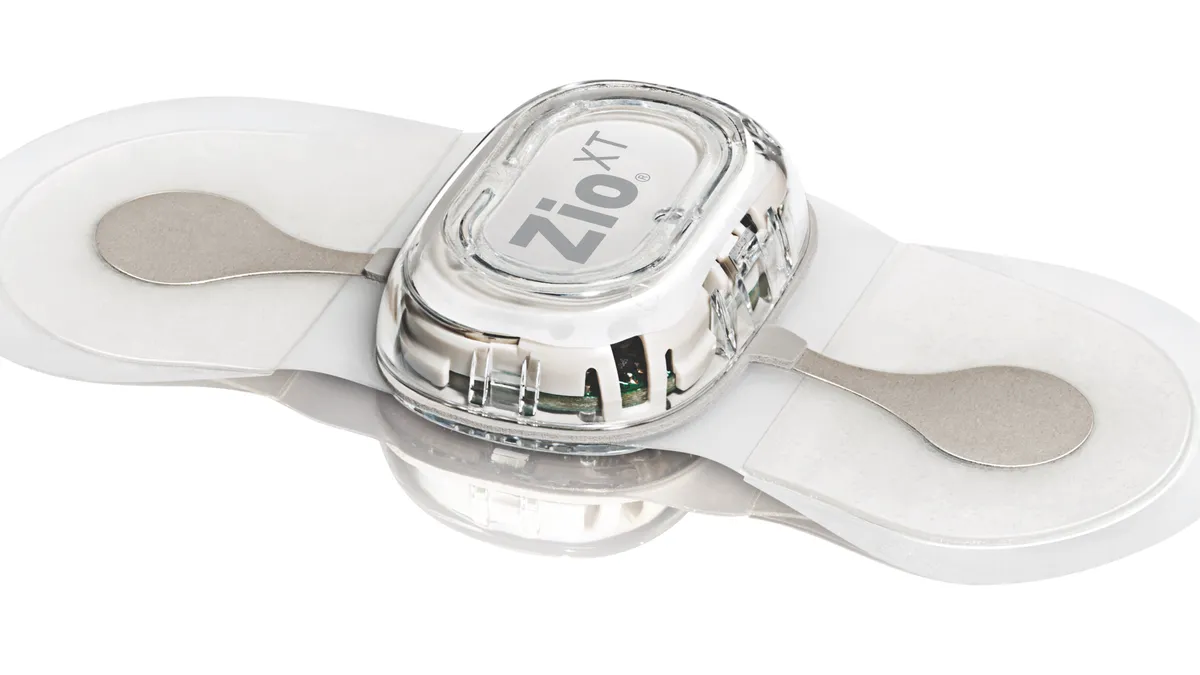Dive Brief:
- iRhythm Technologies does not expect Medicare national pricing for long-term cardiac monitoring to be established for 2022 after the Centers for Medicare and Medicaid Services did not make the proposal in the most recent Physician Fee Schedule proposed rule.
- The company is now left to negotiate further with Novitas Solutions, the regional Medicare rate setter that slashed prices for long-term cardiac monitoring, or another Medicare Administrative Contractor. However, those options have no guarantees of success, likely leaving rates about $200 below historical levels for the foreseeable future. "We have multiple avenues available to potentially achieve higher Medicare reimbursement, and we are actively pursuing all of them," Dan Wilson, executive vice president of strategy and corporate development, said during a Thursday earnings call, adding "it may take some time."
- iRhythm outperformed expectations in the second quarter despite the drag from the lowered rates, growing revenue by nearly 60% to $81.3 million from a year ago. The company still posted a net loss of $17.4 million in the quarter, though a slight improvement over a loss of $20.4 million for the same period of 2020.
Dive Insight:
The first six months of 2021 have been challenging for iRhythm. After riding a string of success throughout last year and being the consensus leader among analysts of a promising submarket, reduced Medicare rates propelled the company into a downward spiral, which may be slowing but is nevertheless still ongoing.
Novitas' pricing saga had a disproportionate impact on iRhythm compared to others in the cardiac monitoring space as long-term monitoring makes up the overwhelming majority of its business. The MAC slashed rates in January, and then upped them in April; however, they have settled at roughly $200 below iRhythm's historical rate of $311.
iRhythm's stock price plummeted shortly after the January rate cut, dropped again after Novitas' adjustment was not overly meaningful and has continued to decline through August. The company's stock price has dropped from $251 on Jan. 28 to $48.29 when the market closed Thursday.

During that tumult, CEO Mike Coyle left the company in June about four months into the job. Furthermore, CMS did not propose a national price for long-term cardiac monitoring, which would have been a crucial workaround of the Novitas rates. And CMS may not make changes anytime soon.
"We will be using the open comment period between now and mid-September to provide comments to CMS' proposed rule and are joining other industry stakeholders to continue support of potential national pricing for calendar year 2022," Wilson told investors. "However, we believe the more likely outcome is that we will remain with carrier pricing in 2022 while continuing to pursue national pricing in the following year cycle for calendar year 2023."
iRhythm may get some relief from a string of 2021 drama, however. The company beat Wall Street's expectations for revenue in the second quarter by about $9 million and released 2021 guidance for the first time. iRhythm expects full-year 2021 revenue to fall between $320 million to $325 million, representing year-over-year growth of 21% to 23%.
The company's newer Zio AT monitor also made up over 10% of revenue in the quarter for the first time.
iRhythm and other companies are continuing to work with Novitas and other MACs on an alternative payment method and plan to submit pricing data to a third-party analyzer soon, which should be turned over to the MACs in September or October.
As the lowered rates stay in place, iRhythm has to manage a potential impact on commercial payer rates. The company has previously said the majority of commercial contracts were negotiated at or close to historical rates for 2021; this may change in 2022.
"If we're unsuccessful in improving Medicare rates before calendar year 2022, it is prudent to expect that some of our commercial rates may begin to be negatively impacted next year," Wilson said. He would not speculate on a projected loss from reduced commercial rates.














